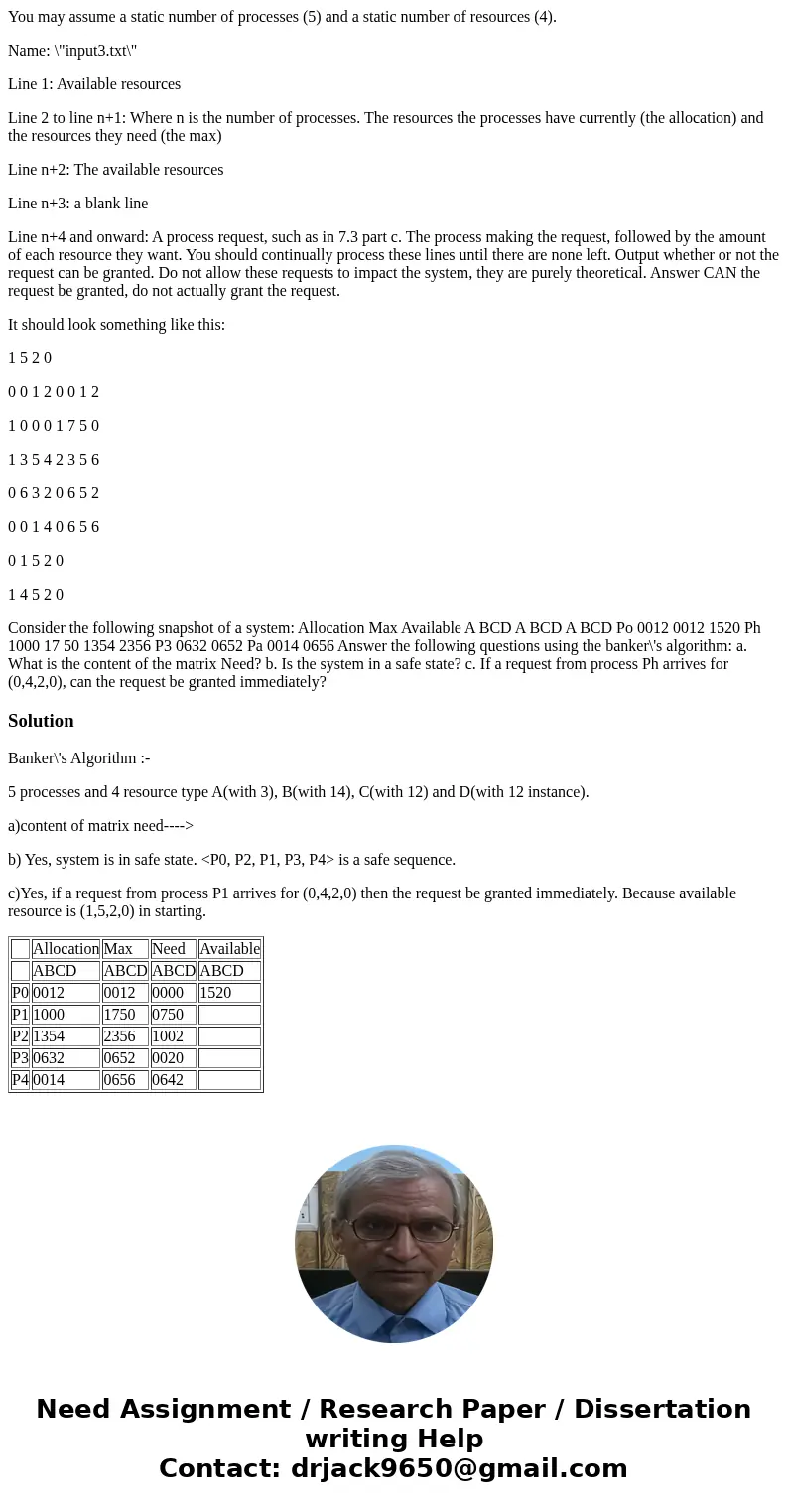You may assume a static number of processes 5 and a static n
You may assume a static number of processes (5) and a static number of resources (4).
Name: \"input3.txt\"
Line 1: Available resources
Line 2 to line n+1: Where n is the number of processes. The resources the processes have currently (the allocation) and the resources they need (the max)
Line n+2: The available resources
Line n+3: a blank line
Line n+4 and onward: A process request, such as in 7.3 part c. The process making the request, followed by the amount of each resource they want. You should continually process these lines until there are none left. Output whether or not the request can be granted. Do not allow these requests to impact the system, they are purely theoretical. Answer CAN the request be granted, do not actually grant the request.
It should look something like this:
1 5 2 0
0 0 1 2 0 0 1 2
1 0 0 0 1 7 5 0
1 3 5 4 2 3 5 6
0 6 3 2 0 6 5 2
0 0 1 4 0 6 5 6
0 1 5 2 0
1 4 5 2 0
Consider the following snapshot of a system: Allocation Max Available A BCD A BCD A BCD Po 0012 0012 1520 Ph 1000 17 50 1354 2356 P3 0632 0652 Pa 0014 0656 Answer the following questions using the banker\'s algorithm: a. What is the content of the matrix Need? b. Is the system in a safe state? c. If a request from process Ph arrives for (0,4,2,0), can the request be granted immediately?Solution
Banker\'s Algorithm :-
5 processes and 4 resource type A(with 3), B(with 14), C(with 12) and D(with 12 instance).
a)content of matrix need---->
b) Yes, system is in safe state. <P0, P2, P1, P3, P4> is a safe sequence.
c)Yes, if a request from process P1 arrives for (0,4,2,0) then the request be granted immediately. Because available resource is (1,5,2,0) in starting.
| Allocation | Max | Need | Available | |
| ABCD | ABCD | ABCD | ABCD | |
| P0 | 0012 | 0012 | 0000 | 1520 |
| P1 | 1000 | 1750 | 0750 | |
| P2 | 1354 | 2356 | 1002 | |
| P3 | 0632 | 0652 | 0020 | |
| P4 | 0014 | 0656 | 0642 |

 Homework Sourse
Homework Sourse